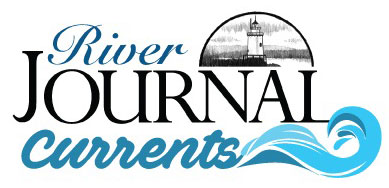
In the quiet moments of contemplating life’s end, many individuals seek meaningful ways to make a lasting impact. Whole body donation, a lesser-known yet profoundly influential choice, is one avenue that shapes the future of healthcare and education. Across the country, where medical research and training are essential to advancing care, body donation provides the resources and learning opportunities that cannot be replicated by models or textbooks.
Whole body donation is the process of gifting one’s body to science after death. Once registered with a certified donation program, the donor’s body may be used for a variety of scientific and medical purposes: from training new surgeons to developing new surgical techniques and technologies. For those considering this option, the decision to donate can be a powerful contribution that benefits institutions, along with future generations.
Why Whole Body Donation Matters
The human body, in its intricacy and variability, remains one of the most critical tools for medical learning. Despite the growing use of digital simulations and synthetic models, nothing matches the tactile and anatomical reality of working with actual human tissue. Medical students, researchers, and practicing physicians all rely on donor bodies to refine their knowledge, improve procedural techniques, and study disease progression in ways that simply aren’t possible with alternatives.
Teaching hospitals and universities are on the front lines of innovation. Body donors become silent teachers to thousands of students each year. The impact is not just academic—it is deeply human. These donations lead to better-trained doctors, more successful surgeries, and innovations that save lives.
Understanding the Process
Registering as a whole body donor is typically straightforward. It begins with selecting an accredited donation organization and submitting a registration form. Donors are required to provide basic medical history and consent documentation. This can often be completed online, and many organizations offer support to guide donors or their families through the process.
Eligibility is determined based on various factors. Infectious diseases, extreme body weight, and certain types of trauma may disqualify an individual, but many conditions—including cancer and dementia—do not automatically exclude donation. Each case is reviewed individually, and many programs accept the majority of applicants aged 18 and older.
When a donor passes, it is crucial that the family or healthcare provider notify the donation organization immediately. Timely coordination ensures that the body is received in a condition suitable for research or education. The organization handles transportation, documentation, and placement with a partner institution.
Financial and Emotional Considerations
One of the key reasons individuals and families choose body donation is the alleviation of end-of-life costs. Many programs cover expenses such as transportation and cremation. For families dealing with the emotional and financial stress of a loved one’s passing, this can provide meaningful relief and peace of mind.
However, emotional readiness is just as important. Some families may find it difficult to forego traditional burial or open-casket services. While a memorial service can still be held at any time, the process of donation usually means the body is transported shortly after death. Open conversations with loved ones can help clarify intentions and prepare everyone for what to expect.
What Happens After Donation
Once accepted, the donor’s body is utilized for research or educational purposes over a period ranging from several months to a few years. At the conclusion of use, the remains are cremated, and ashes are returned to the family or interred according to the donor’s wishes. Individuals who commit to donations may receive free cremation in Rhode Island, Florida, Nevada, and Arizona. Families may then choose to scatter the remains in a meaningful location, keep them in an urn, or conduct a burial in a family plot.
Peaceful and symbolic sites such as natural parks, scenic overlooks, and bodies of water often serve as ideal locations for honoring a loved one’s memory. While laws vary by location, it is always wise to seek permission from local authorities or private landowners before proceeding.
Common Misconceptions
Despite its many benefits, whole body donation is often misunderstood. Some believe it conflicts with religious beliefs, but most major faiths support it as a selfless and generous act. Others think it precludes organ donation, but many individuals register for both, with life-saving organs retrieved before the body is used for research.
There is also a fear that donors lose control over how their bodies are used. While families won’t always know the exact details, reputable organizations work with ethical institutions and adhere to strict guidelines that prioritize dignity and respect.
A Final Act of Generosity
Whole body donation is more than an alternative to burial or cremation. It is a final act of service, a contribution to science, and a gift to future patients and caregivers. In a world where human connection is increasingly valued, donating your body can leave a legacy of compassion, curiosity, and care.
For those considering this path, the first step is a conversation—with family, with medical professionals, or with a trusted donation program. By planning ahead, individuals can ensure their wishes are honored and make a lasting difference that echoes through generations.
In life and in death, we all have the power to shape the future. Whole body donation is one of the most meaningful ways to do just that.






